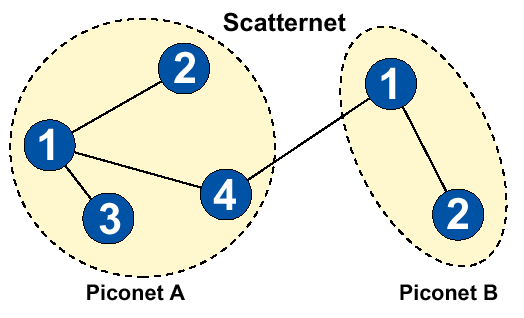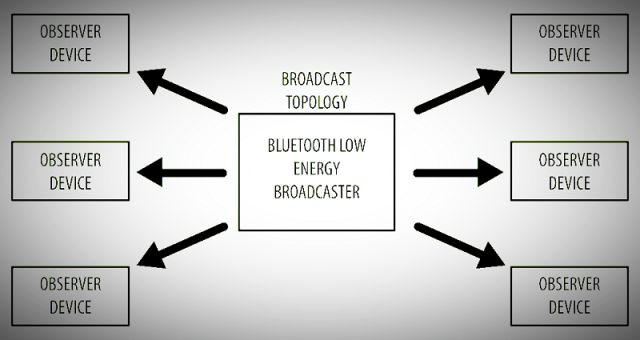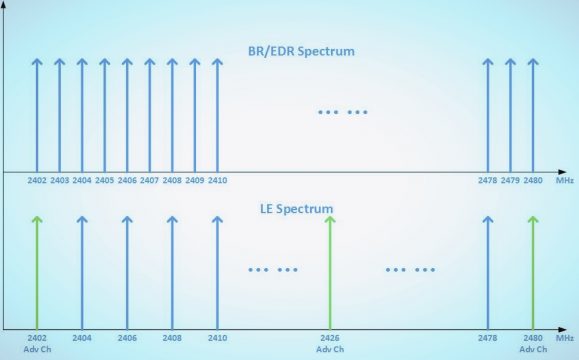Table of Contents:
Overview:
In this Technical Article, we shall discuss the communication differences between Classic Bluetooth and Bluetooth Low Energy, Who is the winner of a round by round battle between BLE and Classic Bluetooth. The brief introduction of both BLE and Classic Bluetooth.
If you are interested in Bluetooth History & How Bluetooth got its name check here
Although Bluetooth Classic and Bluetooth Low Energy share many important things such as architecture, and both operate in 2.4 GHz ISM Band, the fundamental difference between them is that BLE is designed to consume less power. Due to this caveat, BLE is not an ideal candidate for applications such as streaming voice data (talking over the phone); however, it makes BLE an excellent choice when it comes to communicating via exchanging small amounts of data over short periods of time. We shall discuss the communication differences between Bluetooth Classic and Bluetooth_Low_Energy in detail below.
Classic Bluetooth :
Under Bluetooth Classic, when two or more devices want to talk to each other, then they always need to pair first (although pairing does happen when two devices communicate over Bluetooth_Low_Energy too, however; it is not mandatory in the case of BLE). Once the pairing has succeeded, an ad hoc network is established also known as the piconet:
![]()
A piconet can consist of a single master and up to seven slave devices. The devices can switch roles by agreement (a slave can become a master at a later stage during the timeline of communication). Although a master can have up to seven slaves, at any point in time the master is addressing a single slave and the slave is supposed to listen when this happens. Also, it is important to note that being a slave to more than one master is certainly possible. This often results in interconnected piconets, also known as a scatternet.

Whether it is piconet or scattered, the communication channel between the master and slave remains established even if no data is being exchanged and is only terminated when one (or both) of the parties (master/slave) explicitly decides to terminate the connection.
Bluetooth Low Energy(BLE):
On the other hand, communication over Bluetooth_Low_Energy can be abstracted away as interacting with a really intelligent database. During this type of communication, each of the devices involved either plays the role of the database (known as peripheral in Bluetooth Low Energy terminology) or a listener (known as central in Bluetooth_Low_Energy terminology) of that database updates. Whenever new data is available, the database magically notifies all its listeners that new data is available to use. This magic takes place via something known as Indications and Notifications which we shall elaborate on in an upcoming section:

Before moving on to rest of the differences between Bluetooth_Low_Energy and Bluetooth Classic (also known as Bluetooth BR/EDR), let’s first discuss a few terms, the understanding of which is absolutely critical for the discussion ahead:
ISM channels/radio bands:
ISM bands are the portions of the electromagnetic frequency spectrum, which are reserved for industrial, scientific, and medical purposes only. For example, the 2.4GHz ISM band is available worldwide and spans 2400MHz to 2483.5MHz. This means a device operating in this band can be legally used anywhere in the world (provided it is certified).
Data rate:
This is the theoretical rate of data flow, which can be achieved in a system.
Application throughput:
This is the practical rate of data flow, which can be achieved in a system.
Both Bluetooth Classic (BR/EDR) and Bluetooth Low Energy operate in the 2400-2483.5 MHz range within the ISM 2.4 GHz frequency band. However, data exchange in Bluetooth Classic happens over one of the 79 designated channels, as opposed to that of Bluetooth_Low_Energy where the number of designated channels is 40:

Cage Fight: Round by Round Battle:
Round 1 – Power Consumption: (Winner – BLE)
Ultra-low power consumption is the main attracting feature of BLE technology. It enables small devices to run for 5-10 years on just a coin cell battery. The BLE device is in sleep mode most of the time and only wakes up when a connection is initiated. The actual connection happens only for a few seconds. The maximum or peak consumption is only 15 mA, and the average power consumption is just 1 uA. However, based on likely usage patterns a Bluetooth_low_energy wireless technology chip transmitting at 1 Mbps with a range of a few meters would use around one-tenth the power of a Bluetooth chip transmitting at the same data rate and range.
Round 2 – Range of the Device: (Winner – Classic Bluetooth)
Just like every coin has 2 sides, so does BLE technology. The technology uses very little power for its operation and thus increases the longevity of the device; on the other hand, this feature reduces the range of the device operating this technology. If you are dealing with a device that needs a longer range, Classic Bluetooth is the way to go.
Round 3 – Throughput: (Winner – Classic Bluetooth)
The actual /practical transfer rate for BLE is around 100 – 250 Kbps as compared to roughly 2 Mbps for Classic Bluetooth. Therefore, streaming high-quality audio/video through BLE is a bit of an issue for now. BLE is all about transferring small, infrequent bits of data with the lowest power and latency.
Round 4 – Cost: (Winner – BLE)
BLE devices are cheaper than Classic Bluetooth. Classic Bluetooth wireless technology has been designed to suit a wide range of applications. This has meant some compromises; in particular,
Classic Bluetooth wireless technology has a relatively complicated protocol, requires large capacity batteries and hence is relatively expensive. On the other hand, Bluetooth_low_energy wireless technology is specifically designed to be a low-cost wireless technology to encourage the widest possible take-up in a range of coin cell battery-powered electronic devices.
Round 5 – Number of Slaves Attached to the Master: (Winner – BLE)
BLE devices can accommodate a larger number of slaves as compared to their other versions. How large a number depends on the implementation and the available memory sizes of the devices.
Round 6 – Connection Setup Speed: (Winner – BLE)
The BLE devices are much faster than the Classic version. Many features of classic Bluetooth are inherited in Bluetooth_low_energy technology including adaptive frequency hopping as well as part of the logical link control and adaptation protocol interface. BLE also implements the same link security with simple pairing modes, secure authentication, and encryption. This inheritance makes Bluetooth_low_energy technology easy to set up, robust and reliable in tough environments.
Overall Result – It is fairly evident that BLE beats Classic Bluetooth in terms of the number of features, but it really comes down to a user’s preference of certain features when making the choice between the two options.
The core technical specifications of Bluetooth Classic and Bluetooth Low Energy are tabulated as follows:
| Technical specifications | Bluetooth Low Energy | Bluetooth Classic |
| Power consumption | Rated Power Consumption of 0.01 to 0.5 W |
Rated power consumption of 1 W
|
| Data rate and throughput |
The physical data rate is 1 MBit/s with an effective application data throughput of 0.3 MBit/s
|
The physical data rate is 1-3 MBit/s with an effective application data throughput of 2.1 MBit/s
|
|
Latency (from a non-connected state)
|
6 ms | 100 ms |
|
Voice capable
|
No | Yes |
|
Distance/range (theoretical max.)
|
>100 m | 100 m |
| Pairing mandatory | No | Yes |
| Frequency (GHz) | 2.4 | 2.4 |
|
Active slaves
|
Up to 7 | Undefined and implementation-dependent |
| Security |
128-bit AES and application layer user-defined
|
56/128-bit and application layer user-defined
|
| Network topology | Point-to-point and Star | Piconet, scattered, and point-to-point |
| Frequency channels | 40 | 79 |
|
Minimum total time to send data (det. battery life)
|
3 ms | 100 ms |
| Current consumption | <15 mA | <30 mA |
| Logo | 
|
Summary:
Classic Bluetooth should be used where the throughput required is of a higher value and where power consumption, cost, connection speed, and the number of slaves attached to the master are not of great concern.
BLE should be used where power consumption, cost, connection speed, and the number of slaves attached to the master are important and throughput is not of as great importance.
If you are interested in Bluetooth History & How Bluetooth got its name check here

[…] ihr Name verrät, energiesparender. Mehr über die Unterschiede zwischen Classic und BLE gibt es hier. Leider ist Classic Bluetooth in MicroPython (noch?) nicht implementiert. Hingegen ist BLE ein […]